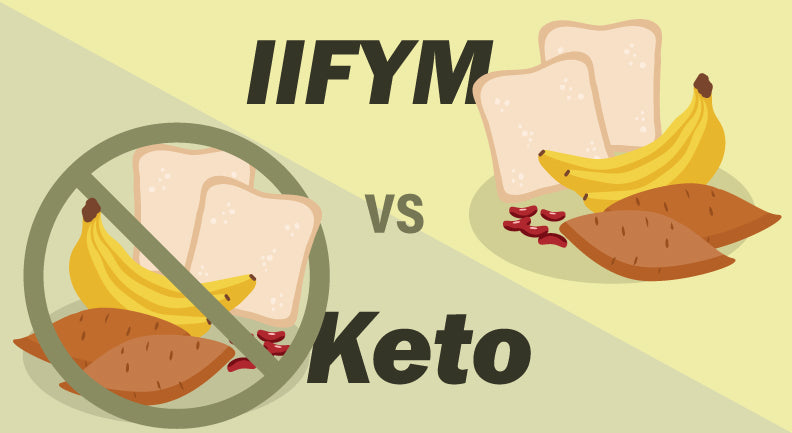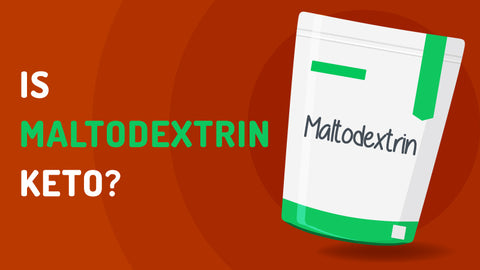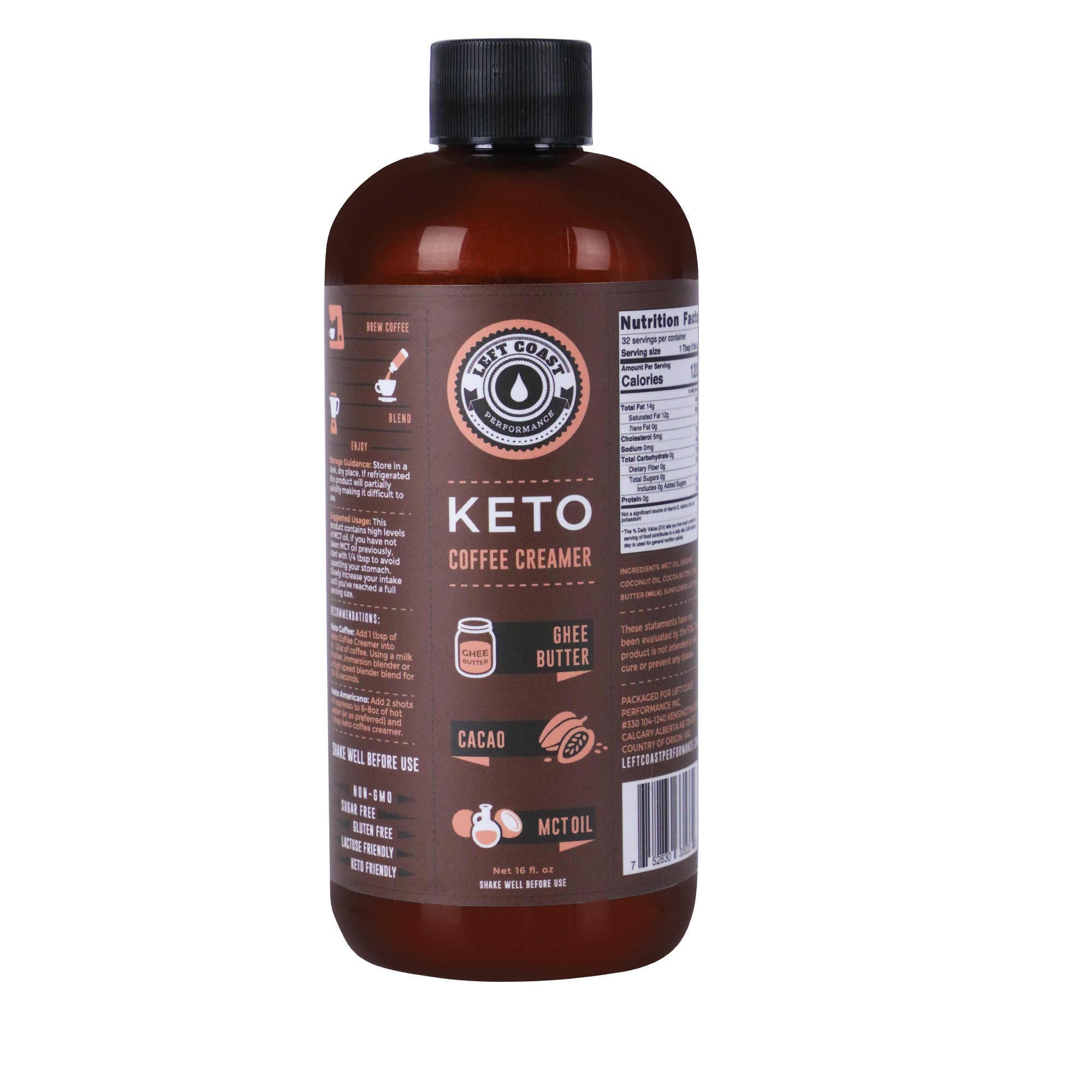IIFYM vs Keto: Which Comes Out on Top?

on June 06, 2019
When does your diet start? For many of us, the answer always seems to be “tomorrow.” For years, the center of nearly all diets was the concept of deprivation, with the prime example being the highly restrictive keto diet.
However, a new kind of diet is challenging the effectiveness of cutting out “bad” foods, claiming that deprivation only makes cravings worse, and leads to unhealthy relationships with food. One of these so-called “non-diet” diets is called IIFYM, and it’s been making a lot of headlines in the diet world lately.
So what’s the deal with IIFYM and how does it compare to a more regimented diet plan like keto? In this article, we’ll walk you through these two approaches to diets and how they stack up in terms of sustainability and results.
What is IIFYM?
IIFYM stands for “If It Fits Your Macros” - macros being short for macronutrients. Every food that we eat can be broken into one of four chemical elements — fats, carbohydrates, proteins, and alcohols.
These macronutrients become the foundation of many diets, though most focus on the first three, as alcohols are not essential for everyday metabolic processes and nutrition.
You can think of IIFYM as a tally system: you are allotted a certain amount of fats, carbs, and proteins for the day and you can fill those macronutrient quotas any way you like. All foods are acceptable on this diet, junk food included. The only stipulation is that the upper limit of macros must be respected — No overages are allowed.
This dieting strategy doesn’t put a blanket ban over any food or type of food, essentially eliminating the feeling of deprivation found in other diets.
While the IIFYM diet contains very few rules, it does require a fair bit of math in order to determine your specific macronutrient goals.
Calculating Macros
The first step on any IIFYM journey is to calculate your macros. There are many IIFYM macro calculators out there, but most follow a few simple steps in order to tailor a macronutrient plan to fit weight loss needs.
Find your BMR
BMR stands for basal metabolic rate. BMR measures how much energy your body uses while at rest. The Harris-Benedict Equation is used to calculate this number. According to the most recent formulation of the equation, for men, BMR = (10 × weight in kg) + (6.25 × height in cm) - (5 × age in years) + 5. For women, BMR = (10 × weight in kg) + (6.25 × height in cm) - (5 × age in years) - 161.
Calculate your activity factor
Once you have your BMR, you then multiply it by your total daily energy expenditure, a metric which gives you an estimate on how many calories you burn a day, taking physical activity into account.
Those who live a sedentary lifestyle with little to no exercise will multiply their BMR by 1.2. For light activity, moderate activity, heavy activity, and extreme activity, the activity factors are 1.375, 1.55, 1.725 and 1.9, respectively.
Factor in Weight Loss Goals
Until now, all that calculating was to determine your baseline calorie count. Your Total Daily Energy Expenditure (TDEE) tells you how many calories you can eat a day and still maintain your current weight. By manipulating this number, you can set a realistic weight loss goal. Typically, nutritionists recommend reducing your TDEE by 15-25%. Once you have this number, you can move on to calculating your macros.
Calculate Macros
Once you calculate the number of calories you should be eating per day in order to lose weight, you can work backward to determine exactly how many grams of each macronutrient you should be consuming.
For this step, it’s important to know how many calories are found in each macronutrient. Every gram of fat contributes 9 calories, while every gram of protein contributes 4 calories. A single gram of carbohydrate contributes 4 calories as well.
Fat
According to the Cleveland Clinic, fats should make up 20 - 35% of total calories. To calculate the number of grams of fat you should eat per day follow this formula: (TDEE x fat percentage) / 9.
Protein
A healthy amount of daily protein should be between 10 - 35%. To calculate the amount of protein you should eat per day, use this formula: (TDEE x protein percentage)/ 4.
Carbohydrates
Carbohydrates should account for 45 - 65% of daily calories. To calculate this in grams, use this formula: (TDEE x carbohydrate percentage)/ 4.
Once you calculate your macro goals, all that’s left to do is track your meals with the help of a nutrition calculator. These tools are widely available online and as apps, allowing you to track different food items as the day progresses.
This technology features the nutrition info of thousands of food items, crowdsourced by individuals across the world. You can track every meal, no matter if it’s homemade or served by a restaurant, so you can easily see where you stand on your macro quotas.
IIFYM Bottom Line
IIFYM offers an incredibly flexible approach to dieting, but what’s the bottom line? IIFYM is effective because it relies on the concept of eating fewer calories, which is a proven weight loss strategy. While it does not dictate how healthy food must be, many nutritionists sign off on this approach due to its sustainability.
What is Keto?
Keto, or the ketogenic diet, is another way that many people choose to lose weight. Many people have come to see the keto diet as a lifestyle diet as well, though one that requires much more effort than the IIFYM approach.
The keto lifestyle requires absolute dedication because the diet actually forces the body to diverge from its normal metabolic processes. By following a ketogenic diet, the body begins ketosis, where stored fat is used as a source of energy, rather than blood glucose. This mechanism acts as the body’s emergency response mode and is triggered by low-carbohydrate environments.
Keto Guidelines
While there are many variations of the keto diet, the basic principles are consistent from source to source. Compared to other diets, the keto diet prioritizes macronutrient levels differently, with a primary focus on fat consumption. Moderate levels of protein are allowed on the keto diet, but the regimen is perhaps best known for its heavy restriction of carbohydrates.
The typical keto macro percentages typically break down into something like this:
10% carbohydrate
30% protein
60% fat
Once a keto dieter reaches ketosis, this pattern of macro consumption continues, until progress is made on weight loss goals.
Benefits
Comparatively, the IIFYM and keto diets each have something to offer dieters. Here are how the benefits of each lifestyle break down:
IIFYM
- Has very few restrictions
- Maintains regular percentages of macronutrients
- Is easy to follow and maintain
- Allows for occasional indulgences
- Follows a proven method for weight loss
Keto
- Satiates dieters and keeps them from feeling hungry
- Has proven weight loss effects
- Works when other diets don’t
- Has been around for decades
- Can improve blood sugar control for some
How Hard Are They to Follow?
Diets with many rules and restrictions are hard to follow, which means fewer people stick to them over time. Here’s how IIFYM and keto compare in terms of sustainability:
IIFYM
The IIFYM approach is a diet that requires less discipline. It does not require dieters to change the foods they eat, but rather just the amounts they eat. This eliminates the deprivation factor, which may make the diet easier to follow than many others.
Keto
The keto diet is a lifestyle that requires greater amounts of discipline. This doesn’t necessarily mean that it’s more difficult to follow. The keto diet comes down to a few basic rules, and for some, these rules are easy to follow. However, the keto diet does ban a large portion of foods, which can make the journey more difficult for some.
Disadvantages
There is no cure-all diet that works for everyone. Here are the disadvantages of IIFYM and the keto diet, and how they compare:
IIFYM
- Still a diet
- Doesn’t account for micronutrients
- May promote unhealthy eating behaviors
The disadvantages of IIFYM can be summed up in four words — it’s still a diet. While some may find this diet to be flexible, all that matters is whether it is sustainable for the individual over time. Some may find themselves breaking the cardinal rule of not overeating, which can render this diet ineffective.
Keto
- Difficult to maintain
- Very restrictive
- Doesn’t account for micronutrients / other deficiencies
The keto diet’s Achilles heel has always been sustainability. Too often, keto options don’t exist or the pressures of society force keto dieters to take a break, which essentially means starting the ketosis process all over. A lack of micronutrients usually found in carbs may also lead to disruptions in the keto diet, which can be a major disadvantage.
The Verdict
We say keto.
IIFYM and the keto diet are two vastly different diets which, based on the individual, can deliver vastly different outcomes. When followed correctly, each can be a safe and effective way to lose unwanted weight. The final verdict between the two comes down to personal preference.
However, if you have the discipline for keto, it can yield tremendous results compared to the IIFYM diet.














